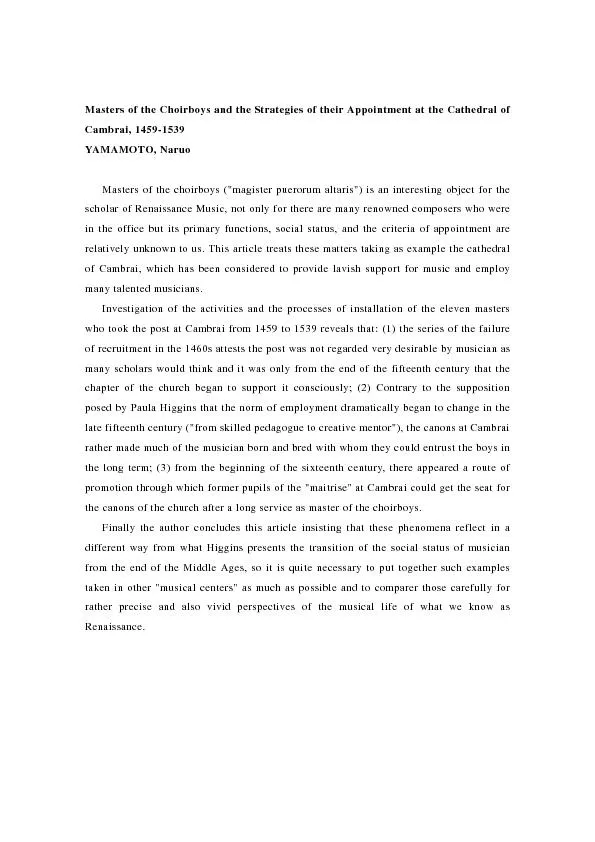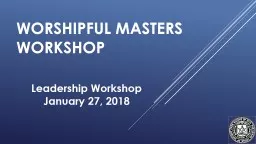PDF-Masters of the Choirboys and the Strategies of their Appointment at th
Author : jane-oiler | Published Date : 2016-03-06
YAMAMOTO Naruo Masters of the choirboys magister puerorum altaris is an interesting object for the scholar of Renaissance Music not only for there are many renowned
Presentation Embed Code
Download Presentation
Download Presentation The PPT/PDF document "Masters of the Choirboys and the Strateg..." is the property of its rightful owner. Permission is granted to download and print the materials on this website for personal, non-commercial use only, and to display it on your personal computer provided you do not modify the materials and that you retain all copyright notices contained in the materials. By downloading content from our website, you accept the terms of this agreement.
Masters of the Choirboys and the Strategies of their Appointment at th: Transcript
Download Rules Of Document
"Masters of the Choirboys and the Strategies of their Appointment at th"The content belongs to its owner. You may download and print it for personal use, without modification, and keep all copyright notices. By downloading, you agree to these terms.
Related Documents














